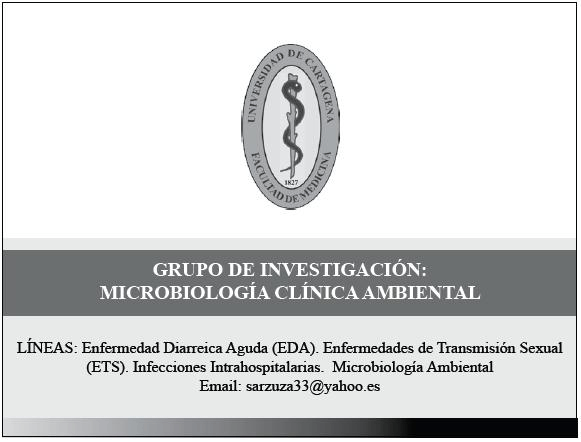Conclusión
La anticoncepción de emergencia tiene un sitial especifico y propio dentro de la anticoncepción moderna. Es el plan B dentro de la planificación familiar.
Tiene su indicación cuando se ha tenido un coito sin protección o cuando ha existido falla en el uso de un método regular. Es herramienta importante dentro del manejo terapéutico de la violación sexual.
La anticoncepción de emergencia debe verse dentro del contexto de la medicina preventiva. Ofrece la oportunidad de hacer prevención del embarazo no deseado y por tanto hacer oportuna prevención del aborto inseguro o bajo condiciones de riesgo.
Conflictos de Intereses:
Rincón E: Ninguno que declarar. Monterrosa A.: es explorador de la anticoncepción hormonal en toda su dimensión. Tiene publicaciones sobre diferentes moléculas disponibles y sobre hormonoterapia en general. No ha tenido ni tiene compromisos con la industria farmacéutica que limiten su libre pensamiento y actuación.
Financiación:
recursos propios de los autores.
Referencias Bibliográficas
- 1. Aller J; Pagés G, Métodos anticonceptivos; editorial Mc-Graw-Hill- Interamericana; 2da edición. Madrid, España. 1998.
- 2. Kleinman RL. Anticoncepción postcoital. En: Manual de planificación familiar para médicos. Londres: Ed. Publicaciones Médicas de IPPF; 1989. P 112 – 118.
- 3. Ellerston C. History and efficacy of emergency contraception: beyond Coca-Cola. Family Planning Perspectives 1996; 28: 44 – 48.
- 4. Monterrosa A. Actualización de conceptos en anticonceptivos orales combinados. Tercera Edición, Santafé de Bogotá. 2001.
- 5. Haspels AA. Emergency contraception: a review. Contraception 1994; 50: 101 – 108.
- 6. Webb AMC, Russell J, Elstein M. Comparison of Yuzpe regimen, Danazol and Mifepristone (RU- 486) in oral postcoital contraception. BMJ 1992; 305: 927 – 931.
- 7. Trussell J, Ellertson C, Stewart F. The effectiveness of the Yuzpe regimen of emergency contraception. Fam Plann Perspect 1997; 29 :60 – 64.
- 8. Monterrosa A. Anticoncepción de emergencia: ¿Cómo, cuándo y con qué ? Rev. Med UNAB. 2006, 9: 45 – 50.
- 9. Croxatto HB, Brache V, 9. Pavez M, Cochon L, Forcelledo ML, Alvarez F, Massai R, FaundesA, Salvatierra AM. Pituitary-ovarian function following the standard levonorgestrel emergency contraceptive dose or a single 0.75-mg dose given on the days preceding ovulation. Contraception. 2004; 70: 442 – 450.
- 10. Trussell J, Ellertson CH, Stewart F, et al. The role of emergency contraception. Am J Obstet Gynecol 2004; 190: S30 – S38.
- 11. McHenry C. Declaración del IMAP sobre anticoncepción de emergencia. Boletín Médico de IPPF 1994; 29(6): 1- 2.
- 12. Ho PC. Emergency Contraception: methods and efficacy. Curr Opin Obstet Gynecol 2000; 12(3): 175 – 179.
- 13. Kives S, Hahn P, White E, et al. Bioavailability of the Yuzpe and Levonorgestrel regimens of emergency contraception: vaginal vs oral administration. Contraception 2005; 71: 197 – 201.
- 14. Task Force on Postovulatory Methods of Fertility Regulations. Randomized controlled trial of Levonorgestrel versus the Yuzpe regimen of combined oral contraceptives for emergency contraception. Lancet 1998; 352: 428 – 433.
- 15. Piaggio G, Von Hertzen H, Grimes DA, et al. Timing of emergency contraception with Levonorgestrel or the Yuzpe regimen. Lancet 1999; 353: 721 – 723.
- 16. Von Hertzen H, Piaggio H, Ding J, Chen J, Song S, et al. Low dose mifepristone and two regimens of levonorgestrel for emergency contraception: a WHO multicentre randomised trial. Lancet. 2002; 360:1803 – 1807.
- 17. Jadhav GS, Vavia PR, Nandedkar TD. Danazol-beta-cyclodextrin binary system: a potential application in emergency contraception by the oral route. AAPS PharmSciTech. 2007 May 11; 8(2): Article 35.
- 18. Cheng L, Gülmezoglu AM, Piaggio G, Ezcurra E, Van Look PFA. Intervenciones para la anticoncepción de emergencia. Base de Datos de Revisiones Sistemáticas; 2008, Número 2. Art. nº: CD001324. DOI: 10.1002/14651858.CD001324. pub3.
- 19. Mittal S. Intervenciones para la anticoncepción de emergencia: Comentario de la BSR (última revisión: 1 de noviembre de 2008). La Biblioteca de Salud Reproductiva de la OMS; Ginebra: Organización Mundial de la Salud.
- 20. Creinin MD, Schlaff W, Archer DF, Wan L, Frezieres R, Thomas M, Rosenberg M, Higgins J. Progesterone receptor modulator for emergency contraception: a randomized controlled trial. Obstetrics and gynecology 2006; 108 (5): 1089 –1097.
- 21. Hamoda H, Ashok PW, Stalder C, Flett GM, Kennedy E, Templeton A. A randomized trial of mifepristone (10 mg) and levonorgestrel for emergency contraception. Obstet Gynecol. 2004; 104: 1307-1313.
- 22. Cheng L, Gülmezoglu AM, Piaggio G, Ezcurra E, Van Look PFA. Interventions for emergency contraception. Cochrane Database Sys Rev. 2008, Issue 2.
- 23. Wu S, Wang C, Wang Y, Cheng W, Zuo S, Li H, Xu X, Wang R, Dong J. A randomized, double-blind, multicenter study on comparing levonorgestrel and mifepristone for emergency contraception. J. Reprod Med. 1999; 8 (suppl-1): 43 – 46.
- 24. Wu S, Dong J, Cong J, Wang C, VonHertzen H, Godfrey EM. Gestrinone compared with mifepristone for emergency contraception: a randomized controlled trial. Obstet Gynecol. 2010; 115: 740 – 744.
- 25. Emea – Europa, EMEA/H/C/1027, Informe público europeo de evaluación de Ellaone. Abril del 2009.
- 26. Creinin MD, Schlaff W, Archer DF, Wan L, Frezieres R, Thomas M, Rosenberg M, Higgins J. Progesterone receptor modulator for emergency contraception: a randomized controlled trial. Obstet Gynecol. 2006; 108:1089 – 1097.
- 27. Glasier AF, Cameron ST, Fine PM, Logan SJ, Casale W, Van Horn J, Sogor L, Blithe DL, Scherrer B, Mathe H, Jaspart A, Ulmann A, Gainer E. Ulipristal acetate versus levonorgestrel for emergency contraception: a randomised non-inferiority trial and meta-analysis. Lancet. 2010; 375: 555 – 562.
- 28. Jesam C, Salvatierra AM, Schwartz JL, Croxatto HB. Suppression of follicular rupture with meloxicam, a cyclooxygenase-2 inhibitor: potential for emergency contraception. Hum Reprod. 2010; 25: 368 – 373.
- 29. Hester KE, Harper MJK, Duffy DM. Oral administration of the cyclooxygenase-2 (COX-2) inhibitor meloxicam blocks ovulation in non-human primates when administered to simulate emergency contraception. Hum Reprod. 2010; 25: 360-367.
- 30. Ojeda G, Ordoñez M, Ochoa L. Salud sexual y reproductiva en Colombia. Encuesta Nacional de Demografía y Salud. ENDS- 2000. Colombia. Profamilia. Bogotá 2000.
- 31. Ojeda G, Ordoñez M, Ochoa L. Salud sexual y reproductiva en Colombia. Encuesta Nacional de Demografía y Salud. ENDS- 2005. Colombia. Profamilia. Bogotá 2005.
- 32. Oizarovich Silvia, Labovsky Marisa. Mitos y realidades en anticoncepción de emergencia. Revista de Endocrinología Ginecológica y Reproductiva. 2005; 10 (32): 99 – 114.
- 33. Gemzell Danielsson K.; Mechanism Of Action Of Emergency Contraception. Contraception; 2010. 82(5): 4040 – 409.
- 34. Croxatto H, Ortiz M.; Mecanismo de Acción del Levonorgestrel en la anticoncepción de emergencia, Rev. Chilena Obstet Ginecol 2004; 69(2): 157-162.
- 35. Bahamondes L, Nascimento JAA, Munuce MJ, Fazano F, Faundes A. The in vitro effect of levonorgestrel on the acrosome reaction of human spermatozoa from fertile men. Contraception 2003; 68: 55 – 59.
- 36. Durand M, Cravioto MC, Raymond EG, Duran Sanchez O, Cruz Hinojosa ML, Castell Rodriguez A, Schiavon R. On the mechanisms of action of short-term levonorgestrel administration in emergency contraception. Contraception 2001; 64: 227 – 234.
- 37. Ellerston C, Evans M, Ferden S, Leadbetter C, Spears A, Johnstone K, Trussell J. Extending the time limit for starting the Yuzpe regimen of emergency contraception to 120 hours. Obstet Gynecol 2003; 101: 1168-1171.
- 38. Soon JA, Levine M, Osmond BL, Ensom MHH, Fielding DW. Effects of making emergency contraception available without a physician´s prescription: a population-based study. CMAJ. 2005; 172: 878 – 883.
- 39. OMS. Medical eligibility criteria for contraceptive use. 4° edition. 2009.
- 40. Polis CB, Schaffer K, Blanchard K, Glasier A, Harper CC, Grimes DA. Advance provision of emergency contraception for pregnancy prevention: a meta-analysis. Obstet Gynecol 2007;110(6):1379 – 1388.
- 41. Copper T. IUD as Emergency Contraception. Princeton University. In: https://princeton.edu/info/eciud.html. Consultado: marzo 14 de 2004.
- 42. Hubacher D, Lara Ricalde R, Taylor DJ, Guerra Infante F, Guzmán Rodríguez R. Use of copper intrauterine devices and the risk of tubal infertility among nulligravid women. N Engl J Med. 2001; 345: 561-567.







